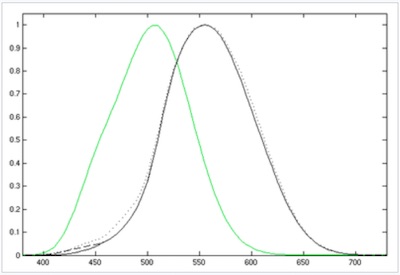What Are the Testing Requirements for LED Lumen Maintenance?

May 26, 2019
Partners may claim an LED lumen maintenance percentage at 25,000 hours, 15,000 hours, or 10,000 hours as an optional metric. An in-situ temperature measurement test (ISTMT) and LED light source lumen maintenance test, conducted in accordance with the IESNA LM-80-2008 Approved Method for Measuring Lumen Maintenance of LED Light Sources, must be uploaded.
ISTMT
The ISTMT follows all requirements of the appropriate ANSI/UL standard, with the following addition: one or more additional thermocouples are attached to the highest LED drive current in the luminaire or lamp may be up to 5% greater than the LM-80 drive current for the corresponding LM-80 case temperature.
The most common standards and the product types they cover are
• ANSI/UL 1598: luminaires
• ANSI/UL 1993: self-ballasted lamps and lamp adapters
• ANSI/UL 153: portable electric luminaires
• ANSI/UL 1574: track lighting systems
• ANSI/UL 2108: low-voltage lighting systems
• ANSI/UL 8750: LED equipment for use in lighting products
For more information about proper ISTMT test environment and thermocouple attachments, please see pages 18-20 of the DOE Energy Star Manufacturer’s Guide for Qualifying Solid State Lighting Luminaires, Version 2.1.
In keeping with past DOE guidance for the Energy Star solid-state lighting program, LED Lighting Facts will accept ISTMT test reports from laboratories that meet one of the following requirements:
1. an Occupational Safety and Health Administration (OSHA) Nationally Recognized Testing Laboratory (NRTL). For a list of laboratories, visit www.osha.gov/dts/otpca/nrtl/
2. a laboratory recognized through UL’s Data Acceptance Program (DAP)
For more information, visit www.ul.com/global/eng/pages/offerings/services/programs/dap/
LM-80
IESNA LM-80 Approved Method for Measuring Lumen Maintenance of LED Light Sources defines the test procedure for obtaining lumen maintenance data for LED light sources.
An LM-80 report must come from a laboratory accredited for LM-80 testing through NIST’s NVLAP program or a laboratory accredited for LM-80 testing through an accreditation body that is an International Laboratory Accreditation Cooperation (ILAC) Mutual Recognition Arrangement (MRA) signatory. For more information about ILAC MRA signatories, visit www.ilac.org/ilacarrangement.html
Regarding the content and application of LM-80 reports in support of submissions to LED Lighting Facts, the program defers to guidance published in September 2011 by Energy Star, with some exceptions.
See the LED Lighting Facts Partner Participation Manual for details.

















